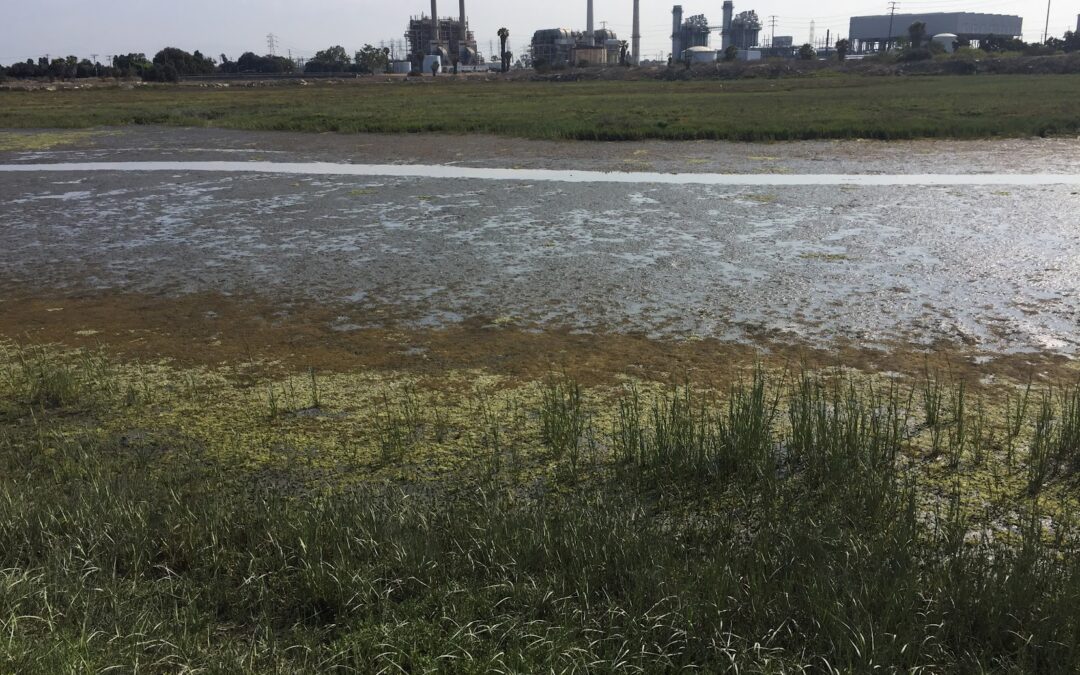
| The City of Long Beach wants to address water pollution in Alamitos Bay by replacing the massive cooling pumps at the AES power plant with new pumps. Pollution in Alamitos Bay is an ongoing problem that MUST be addressed. But it’s not the only problem. The existing pumps are being shut down because the Clean Water Act requires it. Regulations passed in 2010 mandate phasing out “once-through cooling” State-wide because these systems devastate the marine environment. Small plant and fish organisms, mostly eggs and larvae, are sucked into the pumps (entrainment) and killed by the pressure. Larger organisms, like fish and crabs, are killed on screens before entering the pumps (impingement). The entire Los Cerritos Channel watershed suffers from water pollution that eventually accumulates in Alamitos Bay. That’s a problem that must be resolved. Simultaneously, State and local governments are planning an equally critical effort to restore Los Cerritos Wetlands to better ecosystem health. We support addressing all these goals with a coordinated and economical solution. Water pollution in our Bay is primarily the result of contaminants like bacteria, nutrients, heavy metals, and trash running off our urban environment and ending up in the Bay or ocean. They come from around the Los Cerritos Channel watershed – our homes, gardens, streets, factories, and businesses. Will constructing and running new pumps solve that problem? Will the proposed pumps eliminate the pollutants or simply move the pollution into the San Gabriel River and make it someone else’s problem? Furthermore, with the vast majority of Southern California wetlands lost forever to development and infrastructure, we need those few that remain to be high-quality habitat that protect and sustain fish and other species. Will the proposed pumps remove local fish, biota, and marine vegetation from the wetlands and deposit them in the San Gabriel River with the pollutants? If pumping becomes the solution to water quality problems in Alamitos Bay, how will it impact Los Cerritos Wetlands restoration goals? Maybe most importantly, are there other solutions to tackle water quality problems in Alamitos Bay that also help restore the wetlands? Modern solutions to water pollution include multi-benefit projects that clean up runoff near the source while creating more neighborhood “green space” and recharging groundwater. Examples are bio-swales in parks, parking lots, and streets (you can see one at work at the Colorado Lagoon) as well as other non-point source pollution collection solutions. The official process to learn the answers to these questions and more is finally beginning with the City of Long Beach posting a Notice of Preparation. It triggers the beginning of a thorough environmental review. That is a good thing since understanding the environmental impacts will be critical for public understanding, as well as for various regulatory agencies that must issue permits. We are committed to fully understanding this project and its impacts and have laid out, in our letter to the City, what must be studied. We are grateful to well-respected water advocacy groups, Heal the Bay and LA Waterkeeper, for signing on to our letter and helping on this issue. |

